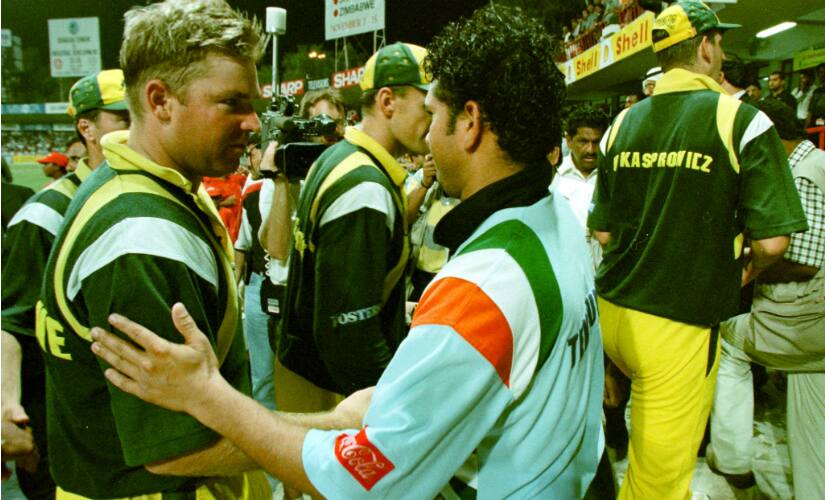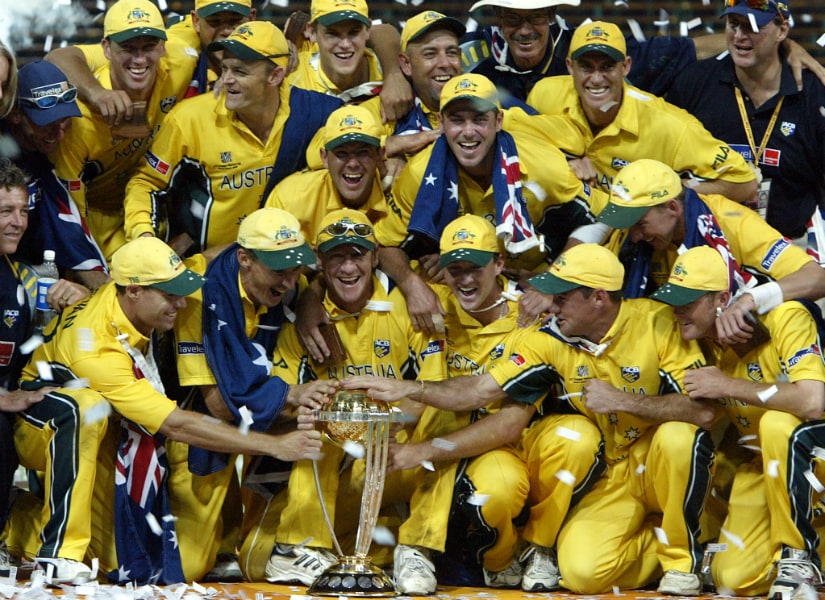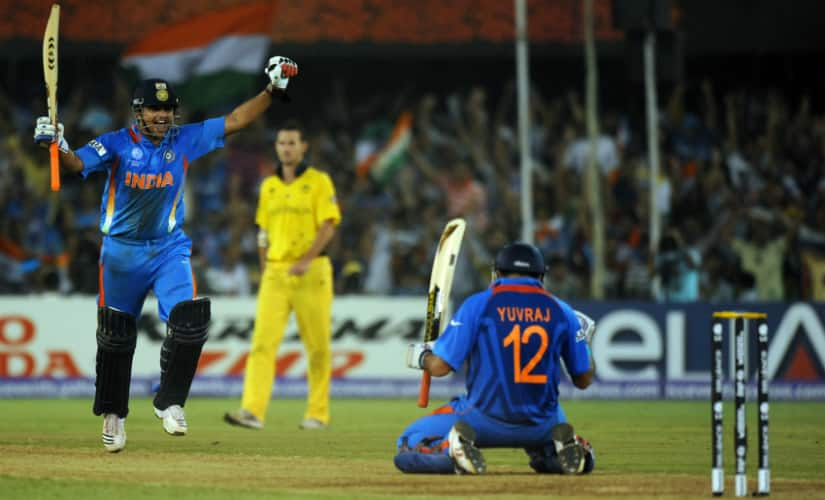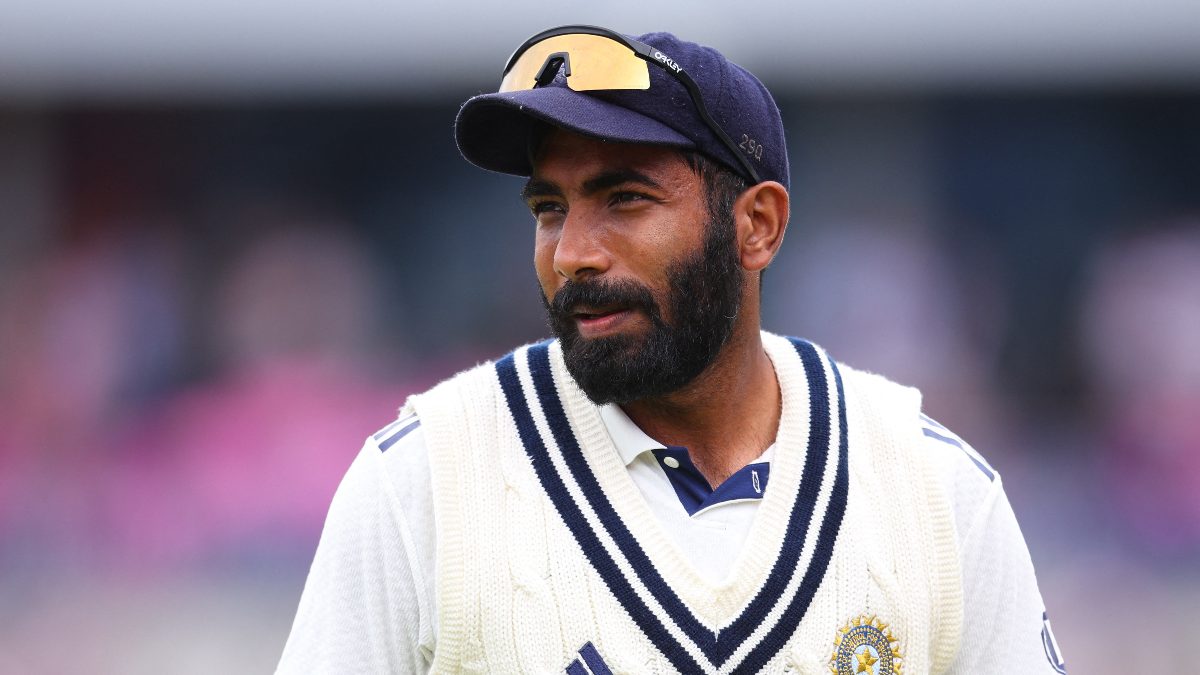Runs. Runs. A feast of runs. Money. Money. A buttload of money. It was perhaps the promise of the aforementioned currencies in the forthcoming five-match ODI series against India that motivated the Australian cricketers and Cricket Australia (CA) to find a way out of their long-drawn-out pay dispute. After all, whenever Australia and India get together to contest in an ODI series, their respective cricket boards are perfectly aware of the gravity of catering to a billion dollar-generating television audience. [caption id=“attachment_4044365” align=“alignnone” width=“825”] Former Australian skipper Michael Clarke believes Virat Kohli is a better ODI batsman than Steve Smith but admits his successor is a cut above the rest in Tests. AFP[/caption] Like Tony Montana says in Scarface, “when you get the money, you get the power.” And boy, do cricket administrators crave power? Their lust for it is what has turned BCCI from a bootlicker into an economic juggernaut. BCCI’s symbiotic relationship with cricket boards like CA, who are always in the mood for a meaningless bilateral ODI series, has helped India become a cricketing powerhouse. Along with Australia, they have dominated one-day cricket for the past 20 years or more. Together, they share an intriguing ODI history and a storied rivalry. Their shared history is a heady mix of edge-of-your-seat drama, sporadic sportsmanship, questionable umpiring, traumatic bowling and a whole lot of ball-whacking. Plus an indecent amount of good ol’ fashioned sledging. Often, in their ceaseless efforts to better each other, their rivalry can turn as mean-spirited and toxic as Cady Heron vs Regina George. So, be warned! Nonetheless, some of India’s most celebrated ODI victories have come against ‘Straya. In their first ever meeting in the format, Sunil Gavaskar’s Indians toppled Greg Chappell’s Aussies by 66 runs in Melbourne in the 1980-81 Benson & Hedges World Series Cup. After Sandeep Patil’s assertive 64 helped India to a total of 208, wily left-arm spinner Dilip Doshi dismissed captain Chappell, Allan Border and Doug Walters to disrupt Australia’s chase before Roger Binny cleaned up the tail to give India a historic win. Unfortunately, Gavaskar’s men went on to lose the next four matches to Australia in the series. India’s next famous victory came in their victorious 1983 World Cup campaign when Binny again helped Kapil Dev and Co trounce David Hooks’ Australians by 118 runs. One cannot obviously talk about India-Australia ODI clashes without mentioning the Lord of Desert Storm, Master Blaster, and chief purveyor of agony and gloom for the Aussies: Sachin Tendulkar. [caption id=“attachment_4044329” align=“alignnone” width=“825”]
 Sachin Tendulkar and Shane Warne shake hands after the tri-nation series final in Sharjah. Tendulkar scored 3077 runs, including a record nine hundreds, against Australia at an average of 44.59. AFP[/caption] Riding on finisher extraordinaire Michael Bevan’s knock of 101, Steve Waugh’s Australia put up a total of 284 in the final group game of the 1997-98 tri-nation Coca-Cola Cup in Sharjah. After being beset by a sand storm, India needed 237 to qualify for the final ahead of New Zealand. Tendulkar single-handedly ensured they did, smashing five sixes and nine fours against a bowling attack boasting the likes of Damien Fleming, Michael Kasprowicz and Shane Warne. Two days later, on what was his 25th birthday, he guided India to victory in the final with another equally sensational ton. An awestruck Steve Waugh rightly said, “It was one of the greatest innings I have ever seen. There is no shame being beaten by such a great player, Sachin is perhaps only next to the Don.” Perhaps, their sweetest win over the Aussies came in the 2011 World Cup quarter-final in Ahmedabad. Yuvraj Singh scored a counter-attacking 57 to guide India to the semi-final ending Australia’s 12-year monopoly at the World Cups. However, India have also frequently suffered at the hands of the Aussies in ODIs. They have lost 68 of the 108 completed games against them. And some of the more heart-breaking ones regrettably came at Word Cups. In the 2003 World Cup final in Johannesburg, Ponting led from the front with an epic 140* smacking the Indian bowlers to all parts of the high veld. After reaching his 50, his next 90 runs came off just 47 balls as he powered Australia to a total of 359. If India had any chance at surmounting Australia’s total, they needed Tendulkar to fire. Alas, he fell to Glenn McGrath in the opening over of the reply. And India’s chase faltered. In the 2015 World Cup semi-final in Sydney, a stellar century from Finicky Fidgeter, supposed heir apparent to Shane Warne and chief purveyor of trauma and trepidation for India, Steve Smith, followed by a late-innings flurry from James Faulkner and Mitchell Johnson led Australia to a total of 328. [caption id=“attachment_4044357” align=“alignnone” width=“825”]
Sachin Tendulkar and Shane Warne shake hands after the tri-nation series final in Sharjah. Tendulkar scored 3077 runs, including a record nine hundreds, against Australia at an average of 44.59. AFP[/caption] Riding on finisher extraordinaire Michael Bevan’s knock of 101, Steve Waugh’s Australia put up a total of 284 in the final group game of the 1997-98 tri-nation Coca-Cola Cup in Sharjah. After being beset by a sand storm, India needed 237 to qualify for the final ahead of New Zealand. Tendulkar single-handedly ensured they did, smashing five sixes and nine fours against a bowling attack boasting the likes of Damien Fleming, Michael Kasprowicz and Shane Warne. Two days later, on what was his 25th birthday, he guided India to victory in the final with another equally sensational ton. An awestruck Steve Waugh rightly said, “It was one of the greatest innings I have ever seen. There is no shame being beaten by such a great player, Sachin is perhaps only next to the Don.” Perhaps, their sweetest win over the Aussies came in the 2011 World Cup quarter-final in Ahmedabad. Yuvraj Singh scored a counter-attacking 57 to guide India to the semi-final ending Australia’s 12-year monopoly at the World Cups. However, India have also frequently suffered at the hands of the Aussies in ODIs. They have lost 68 of the 108 completed games against them. And some of the more heart-breaking ones regrettably came at Word Cups. In the 2003 World Cup final in Johannesburg, Ponting led from the front with an epic 140* smacking the Indian bowlers to all parts of the high veld. After reaching his 50, his next 90 runs came off just 47 balls as he powered Australia to a total of 359. If India had any chance at surmounting Australia’s total, they needed Tendulkar to fire. Alas, he fell to Glenn McGrath in the opening over of the reply. And India’s chase faltered. In the 2015 World Cup semi-final in Sydney, a stellar century from Finicky Fidgeter, supposed heir apparent to Shane Warne and chief purveyor of trauma and trepidation for India, Steve Smith, followed by a late-innings flurry from James Faulkner and Mitchell Johnson led Australia to a total of 328. [caption id=“attachment_4044357” align=“alignnone” width=“825”] Australia beat India by 125 runs in the 2003 World Cup final at the Wanderers in Johannesburg. Reuters[/caption] Alas, Virat Kohli, arguably the best ODI batsman of our generation, was bounced out by Johnson for 1. And India’s chase faltered. However, since the 2015 World Cup triumph, the Steve Smith-led Aussies have not tasted a lot of success overseas. India, on the other hand, are coming off a historic 9-0 sweep in Sri Lanka across all formats. Similar to 2013, Australia have again been scheduled to play an ODI and T20I series before they go back home and try to regain the Ashes. Not only is the Australian bowling attack undermined by injuries to Mitchell Starc and Josh Hazlewood, their coach Darren Lehmann has gone back home to draw up the battle plans to overpower England. Starting 17 September in Chennai, the Champions Trophy runners-up take on the World Cup holders in a five-match ODI series. Interestingly, this is only the second ever ODI between India and Australia at the MA Chidambaram Stadium. It was still called Madras the last time they clashed in the Group A opener of the 1987 World Cup. Kapil Dev won the toss and put Border’s men in to bat and Australia rode on Geoff Marsh’s century to post a total of 268/6. However, there was some contention about whether a Dean Jones shot over long-on had cleared the rope. Umpire Dickie Bird had taken the fielder Ravi Shastri’s word at the time and had signaled it as four. During the innings break, the Australians, led by their team manager Alan Crompton, voiced their disagreement in a brief conference with the umpires. And Kapil Dev, in what was an exemplary display of sportsmanship, yielded to their wishes and India’s target increased by two runs. And would you believe it? India lost that match by one run. [caption id=“attachment_4044349” align=“alignnone” width=“825”]
Australia beat India by 125 runs in the 2003 World Cup final at the Wanderers in Johannesburg. Reuters[/caption] Alas, Virat Kohli, arguably the best ODI batsman of our generation, was bounced out by Johnson for 1. And India’s chase faltered. However, since the 2015 World Cup triumph, the Steve Smith-led Aussies have not tasted a lot of success overseas. India, on the other hand, are coming off a historic 9-0 sweep in Sri Lanka across all formats. Similar to 2013, Australia have again been scheduled to play an ODI and T20I series before they go back home and try to regain the Ashes. Not only is the Australian bowling attack undermined by injuries to Mitchell Starc and Josh Hazlewood, their coach Darren Lehmann has gone back home to draw up the battle plans to overpower England. Starting 17 September in Chennai, the Champions Trophy runners-up take on the World Cup holders in a five-match ODI series. Interestingly, this is only the second ever ODI between India and Australia at the MA Chidambaram Stadium. It was still called Madras the last time they clashed in the Group A opener of the 1987 World Cup. Kapil Dev won the toss and put Border’s men in to bat and Australia rode on Geoff Marsh’s century to post a total of 268/6. However, there was some contention about whether a Dean Jones shot over long-on had cleared the rope. Umpire Dickie Bird had taken the fielder Ravi Shastri’s word at the time and had signaled it as four. During the innings break, the Australians, led by their team manager Alan Crompton, voiced their disagreement in a brief conference with the umpires. And Kapil Dev, in what was an exemplary display of sportsmanship, yielded to their wishes and India’s target increased by two runs. And would you believe it? India lost that match by one run. [caption id=“attachment_4044349” align=“alignnone” width=“825”] India ended Australia’s 12-year monopoly at the 2011 World Cup quarter-final. AFP[/caption] There have been many a cliff-hanger in India-Australia ODIs. In Australia’s ODI tour of India in 2013, James Faulkner steered his team to an unlikely victory in Mohali blasting an unbeaten 64 from just 39 balls. With 44 required from the last three overs, Australia’s chase looked in vain. When Dhoni bowled Ishant Sharma in the 48th over, Faulkner plundered 30 runs off it, including four sixes and a four. Australia won the match with three balls to spare. In that series, Michael Clarke had pulled out to be fit and ready for the Ashes Down Under. So, George Bailey stepped in and led the Australian team commendably despite losing the seven-match series 2-3. The series was the kind of binge fest that would have made Nero and the Medicis green with envy. Batsmen feasting themselves to gluttonous excess. Spectators and TV audiences benumbed by such overindulgence. At the end of the series, Australia had scored more than 300 in five ODIs (only because rain washed out the other two). India had made easy work of 350+ targets. Bailey averaged nearly 96 striking at a touch above 116. Rohit Sharma had scored his first ODI double-century. Kohli had set an Indian record for the quickest century in ODIs. Faulkner had broken Matthew Hayden’s record for the fastest ODI century by an Australian. Yes, it was that kind of series. And when India toured Australia in early 2016 for an ODI series, the batsmen pampered themselves further in the highest scoring bilateral five-match series in ODI history amassing a total of 3,159 runs. A total of 11 centuries were scored — the most in a bilateral series. Even triangular or quadrangular ODI series have not had more than ten. So, expect more day-night rampages of ultra-violence against a clubbable red-ball on the most charitable of pitches. Watch your favourite batsmen indulge in lashings of runs with a spree of sixes and a flurry of fours to a point of aversion. But who are we kidding? Even if our eyes are held open with specula and administered nausea-inducing drugs like in some Kubrickian nightmare, the only thing running through our minds is: Will Rohit Sharma score his third double century this series?
India ended Australia’s 12-year monopoly at the 2011 World Cup quarter-final. AFP[/caption] There have been many a cliff-hanger in India-Australia ODIs. In Australia’s ODI tour of India in 2013, James Faulkner steered his team to an unlikely victory in Mohali blasting an unbeaten 64 from just 39 balls. With 44 required from the last three overs, Australia’s chase looked in vain. When Dhoni bowled Ishant Sharma in the 48th over, Faulkner plundered 30 runs off it, including four sixes and a four. Australia won the match with three balls to spare. In that series, Michael Clarke had pulled out to be fit and ready for the Ashes Down Under. So, George Bailey stepped in and led the Australian team commendably despite losing the seven-match series 2-3. The series was the kind of binge fest that would have made Nero and the Medicis green with envy. Batsmen feasting themselves to gluttonous excess. Spectators and TV audiences benumbed by such overindulgence. At the end of the series, Australia had scored more than 300 in five ODIs (only because rain washed out the other two). India had made easy work of 350+ targets. Bailey averaged nearly 96 striking at a touch above 116. Rohit Sharma had scored his first ODI double-century. Kohli had set an Indian record for the quickest century in ODIs. Faulkner had broken Matthew Hayden’s record for the fastest ODI century by an Australian. Yes, it was that kind of series. And when India toured Australia in early 2016 for an ODI series, the batsmen pampered themselves further in the highest scoring bilateral five-match series in ODI history amassing a total of 3,159 runs. A total of 11 centuries were scored — the most in a bilateral series. Even triangular or quadrangular ODI series have not had more than ten. So, expect more day-night rampages of ultra-violence against a clubbable red-ball on the most charitable of pitches. Watch your favourite batsmen indulge in lashings of runs with a spree of sixes and a flurry of fours to a point of aversion. But who are we kidding? Even if our eyes are held open with specula and administered nausea-inducing drugs like in some Kubrickian nightmare, the only thing running through our minds is: Will Rohit Sharma score his third double century this series?
Australia and India’s ODI history is a heady mix of edge-of-your-seat drama, sporadic sportsmanship, questionable umpiring, traumatic bowling and a whole lot of ball-whacking.
Advertisement
End of Article


)




